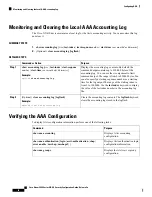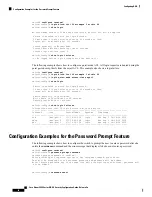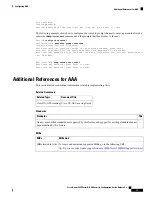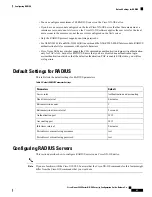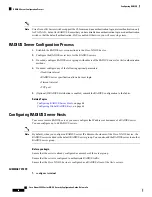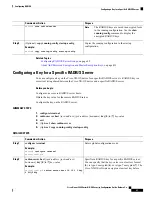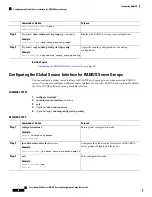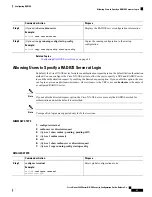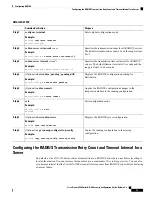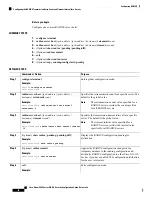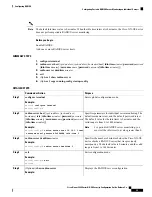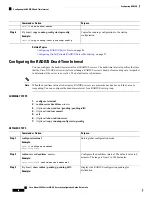
2.
radius-server host
{
ipv4-address
|
ipv6-address
|
hostname
}
3.
(Optional)
show radius
{
pending
|
pending-diff
}
4.
(Optional)
radius commit
5.
exit
6.
(Optional)
show radius-server
7.
(Optional)
copy running-config startup-config
DETAILED STEPS
Purpose
Command or Action
Enters global configuration mode.
configure terminal
Example:
Step 1
switch#
configure terminal
switch(config)#
Specifies the IPv4 or IPv6 address or hostname for a
RADIUS server to use for authentication.
radius-server host
{
ipv4-address
|
ipv6-address
|
hostname
}
Example:
Step 2
switch(config)#
radius-server host 10.10.1.1
Displays the RADIUS configuration pending for
distribution.
(Optional)
show radius
{
pending
|
pending-diff
}
Example:
Step 3
switch(config)#
show radius pending
Applies the RADIUS configuration changes in the
temporary database to the running configuration.
(Optional)
radius commit
Example:
Step 4
switch(config)#
radius commit
Exits configuration mode.
exit
Example:
Step 5
switch(config)#
exit
switch#
Displays the RADIUS server configuration.
(Optional)
show radius-server
Example:
Step 6
switch#
show radius-server
Copies the running configuration to the startup
configuration.
(Optional)
copy running-config startup-config
Example:
Step 7
switch#
copy running-config startup-config
Related Topics
Configuring a Key for a Specific RADIUS Server
, on page 47
Cisco Nexus 9000 Series NX-OS Security Configuration Guide, Release 9.x
45
Configuring RADIUS
Configuring RADIUS Server Hosts




